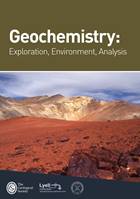
Geochemistry: Exploration, Environment, Analysis (GEEA) is a co-owned journal of the Geological Society of London and the Association of Applied Geochemists (AAG).
Geochemistry: Exploration, Environment, Analysis is a Plan S compliant journal.
.
.
.
Editor-in-Chief
The Editor-in-Chief Scott Wood (North Dakota State University, USA) is supported by an international Editorial Board.
Scope
GEEA welcomes papers that focus on the use of geochemistry in mineral exploration and resource development, the application of geochemistry to environmental issues related to mining and mineral processing, and the development of methods and techniques to geochemically analyze rocks, soils, sediments, waters, and vegetation. Particularly welcome are papers that examine:
- the integration of geological, geochemical, and geophysical methods in relation to mineral exploration
- geochemical mapping at all scales
- the application of geochemistry in identifying the nature and extent of pollution associated with mining and mineral processing, and approaches to remediation
- the application of geochemistry to geometallurgy
- case histories of broad interest, such as the use of innovative geochemical methods leading to new mineral discoveries, and solving environmental issues related to mining, mineral processing and remediation.
GEEA is well-known for its
thematic collections on hot topics. All abstracts are free to read on the Lyell Collection.
GEEA publishes research articles; reviews; editorial content and thematic collections. If you would like to propose a thematic collection, please get in touch with the Editor-in-Chief.
Online in the Lyell Collection
All journal content is hosted online and accessible via the Lyell Collection. The journal publishes 4 issues per year.
Online only and continuous publication
From 2021, the journal is published online only. Following acceptance, the accepted manuscript version of the article is made available online immediately. After completion of the production process, the final Version of Record is published directly in an issue. All accepted manuscripts and versions of record are hosted and accessible via the Lyell Collection.
The journal is abstracted and/or indexed in:
- AGI’s Bibliography and Index of Geology
- Chemical Abstracts
- Current Contents
- Engineering Index
- GEOBASE
- GeoRef
- Mineralogical Abstracts
- PASCAL/CNRS
- GeoArchive
- Thomson ISI database (SCIE, CCIPC & ES)
Recent GEEA highlights
Surface expression of Late Caledonian magmatic lithium concentration, in the Rhynie Chert, UK
By J. Parnell and J. G. T. Armstrong
The Lower Devonian plant-bearing Rhynie Chert, Aberdeenshire, UK, consists of sinters deposited by a hot spring system. Like many modern hot springs, the Rhynie geothermal system was lithium-rich, and its silica deposits are richer in lithium than other current or fossil sinters. Twenty samples of Rhynie sinter have a mean content of 255 ppm lithium. The high values imply exceptional lithium contents in the spring waters. Together with pegmatites and granites in the same region, the chert is related to a lithium-rich Late Caledonian magmatic suite, of which it is a surface expression. The measurements suggest that ancient hot spring deposits could provide valuable data during the exploration for lithium.
Read the open access article free on the Lyell Collection
Estimating the silica content and loss-on-ignition in the North American Soil Geochemical Landscapes datasets: a recursive inversion approach
By Patrice de Caritat, Eric C. Grunsky, and David B. Smith
A novel method of estimating the silica (SiO2) and loss-on-ignition (LOI) concentrations for the North American Soil Geochemical Landscapes (NASGL) project datasets is proposed. Combining the precision of the geochemical determinations with the completeness of the mineralogical NASGL data, we suggest a ‘reverse normative’ or inversion approach to first calculate the minimum SiO2, water (H2O) and carbon dioxide (CO2) concentrations in weight percent (wt%) in these samples.
Read the open access article free on the Lyell Collection